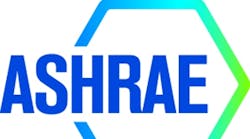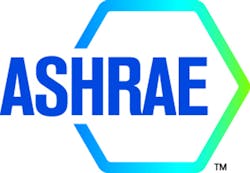Addenda open for public comment until Oct. 4 are:
- bt, which updates efficiency values for low-voltage dry-type transformers to be consistent with federal law.
- bv, which exempts baselines with purchased cooling and heat from the reset control requirements in Appendix G.
- bw, which provides a baseline for lighting controls consistent with addendum bm.
- bx, which requires a modeler to use the design setpoint for multizone thermostat systems.
- by, which requires pipe insulation on the first 8 ft of branch piping.
- bz, which replaces Table 6.8.1-11 to account for new rating conditions.
- ca, which modifies the fan-power criteria by lowering the motor-power threshold for the fan-speed-control requirement.
- cb, which updates duct-insulation requirements.
- cc, which replaces the definition of sidelighting effective aperture, which inadvertently was deleted.
- ce, which increases the minimum energy-recovery-ventilation requirement for smaller units.
- cf, which adds requirements to Section 6.1.1.3.1 for direct-replacement HVAC equipment.
- ci, which adjusts the equations for fenestration orientation in Section 5.5.4.5.
- cj, which modifies a footnote in Appendix G for single-zone variable-air-volume systems serving computer rooms.
- ck, which changes the control setpoint for cooling towers, clarifies the operation of condenser water pumps, and modifies the exception for pump W/gpm for water-side economizers.
- du, which requires water-side economizers for non-fan chilled-water systems, such as radiant-cooling or passive chilled-beam systems, and for active chilled-beam systems.
Among seven addenda open for public comment until Oct. 19 is ch, which proposes a new set of interior lighting-power-density (LPD) limits for building-area and space-by-space compliance paths. These new limits stem from the inclusion of light-emitting-diode (LED) technology in the space-type models used to determine appropriate LPD limits for compliance with the standard, Eric Richman, chair of the standard’s lighting subcommittee, said.
The LPD limits (watts per square foot) were calculated using Illuminating Engineering Society (IES) formulas that relate lighting energy use to lighting quantity based on the application of appropriate lighting technologies with individual space models. These models incorporate efficient cost-effective lighting technology, appropriate light-loss factors, and current design practice.
The new LPD values generally are lower—by sometimes small to often significant amounts. The magnitude of the change is based primarily on the amount of LED technology incorporated into the model.
“These proposed changes have been under consideration within the 90.1 lighting subcommittee for several years,” Richman said. “Inclusion of LEDs were seriously considered for the 2013 version of the standard. However, at the time the changes needed to be processed (late 2012), the cost of LEDs was still relatively high, and the variety and depth of available products was not deemed sufficient to incorporate into a mandatory code. We understand that LED technology continues to improve and become even more cost-effective such that by the time these new requirements are required for building projects, their effectiveness and viability on code compliance will be even easier.”
Also open for public comment until Oct. 19 is Addendum br, which was developed in response to the publication of ANSI/ASHRAE Standard 169-2013, Climatic Data for Building Design Standards. Standard 169 includes more recent weather data (resulting in changes in climate-zone assignments for some locations, including approximately 10 percent of the 3,000 counties in the United States) and the creation of Climate Zone 0. The proposed addendum adds requirements for mechanical provisions.
Addenda also open for public comment until Oct. 19 are:
- ai, which revises the fenestration criteria for certain climate zones.
- bs, which updates energy-efficiency-ratio values and establishes minimum integrated-energy-efficiency-ratio values for water-source variable-refrigerant-flow products above 65,000 Btuh.
- cd, which establishes a product class for dedicated outdoor-air systems.
- cg, which modifies the LPD for building exteriors.
- cl, which relocates Table 7.8 for minimum efficiency requirements for residential water heaters and pool heaters to an informative appendix.
To view the addenda and to comment, go to www.ashrae.org/publicreviews.










